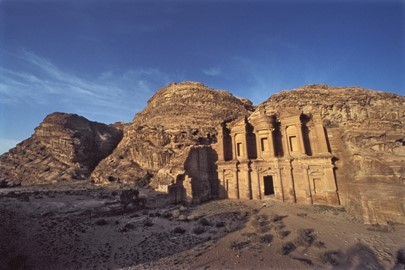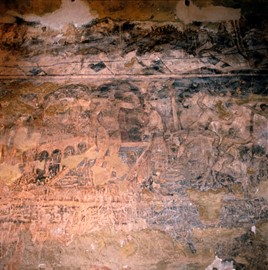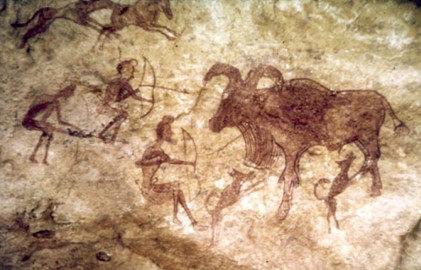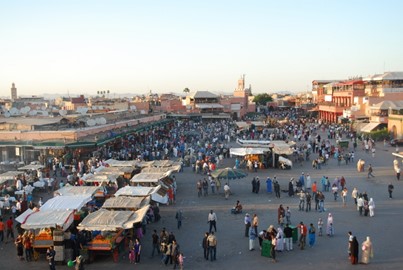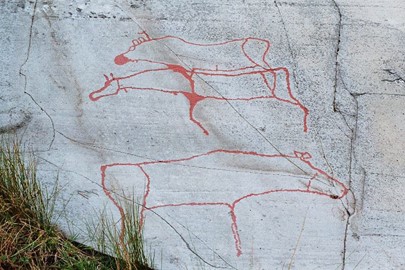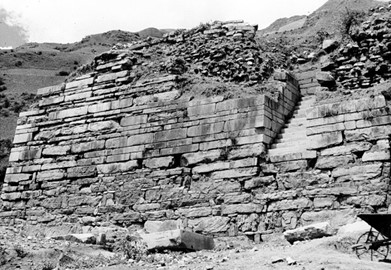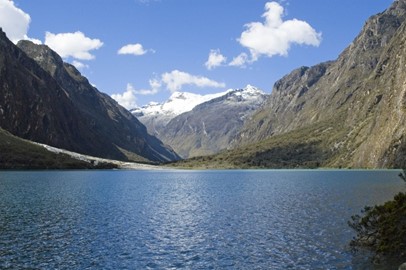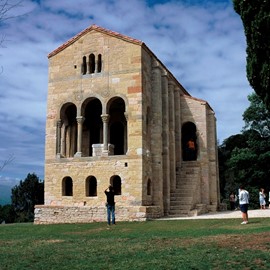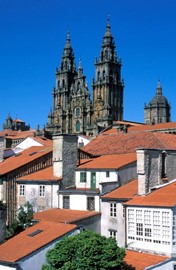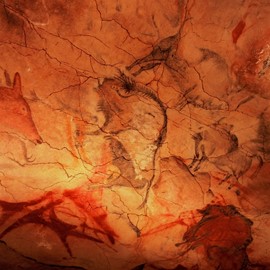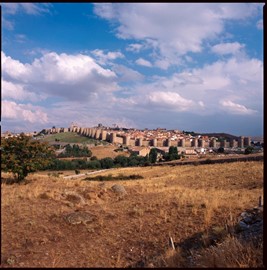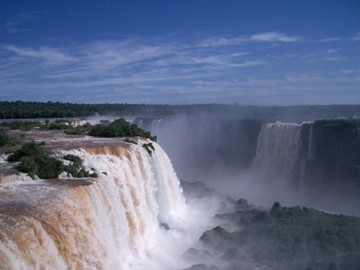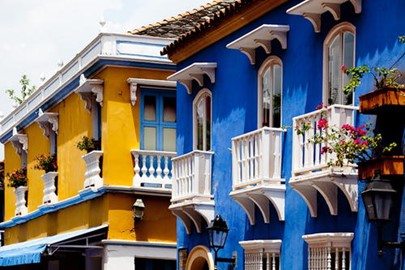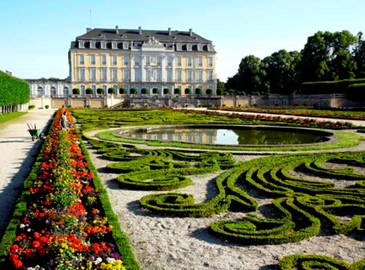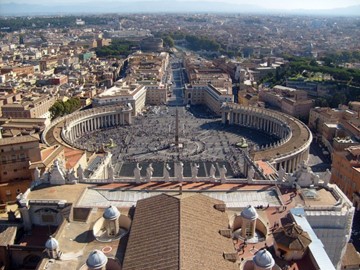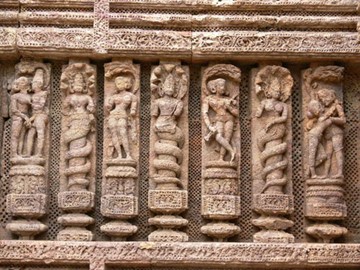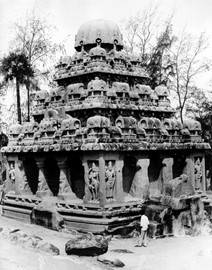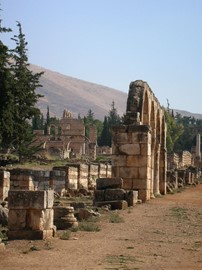search
Petra
Petra, a UNESCO World Heritage site in Jordan, is an ancient city renowned for its rock-cut architecture and sophisticated water management system. Carved into rose-red cliffs, its iconic structures, like the Treasury and Monastery, highlight the engineering and artistic prowess of the Nabataean civilization. This archaeological marvel, blending natural beauty with historical significance, served as a thriving trade hub in antiquity.
Quseir Amra
Quseir Amra, a UNESCO World Heritage site in Jordan, is a well-preserved desert castle renowned for its unique frescoes and historical significance. Built in the early 8th century, this small structure features vibrant wall paintings depicting scenes of hunting, bathing, and celestial figures, offering a rare glimpse into the art and culture of its time. The site also includes a bathhouse with a sophisticated water system, highlighting ancient architectural ingenuity in a harsh desert environment.
Tadrart Acacus
The Rock-Art Sites of Tadrart Acacus, a UNESCO World Heritage Site in Libya, feature a remarkable collection of prehistoric rock carvings and paintings spanning thousands of years. These artworks depict scenes of daily life, animals, and cultural symbols, offering invaluable insights into the evolution of human societies and environmental changes in the region.
Medina of Marrakesh
The Medina of Marrakesh, a UNESCO World Heritage site in Morocco, is a historic walled city renowned for its vibrant cultural and architectural legacy. Founded in the 11th century, it features a labyrinth of narrow streets, bustling souks, and iconic landmarks like the Koutoubia Mosque, blending Islamic, Berber, and Andalusian influences. Its well-preserved medieval urban fabric and lively atmosphere, exemplified by the Jemaa el-Fnaa square, highlight its significance as a living testament to Moroccan herit... Read More
Rock Art of Alta
The Rock Art of Alta, a UNESCO World Heritage site in Norway, features thousands of prehistoric carvings and paintings dating back to 4200–500 BC. Created by hunter-gatherer communities, these artworks depict animals like reindeer, elk, and fish, as well as human figures engaged in hunting, fishing, and rituals. Discovered in the late 20th century, the site offers valuable insights into the daily life, beliefs, and environment of ancient societies. Its well-preserved state makes it a significant archaeologi... Read More
Chavin
Chavín de Huántar, a UNESCO World Heritage site in Peru, is an ancient archaeological site dating back to around 1200 BCE. Located in the Andean highlands, it served as a major ceremonial and cultural center for the Chavín civilization, known for its distinctive art and architecture. The site features a complex of stone structures, including the U-shaped Old Temple and the larger New Temple, adorned with intricate carvings of felines, birds, and anthropomorphic figures. Its significance lies in its role as ... Read More
Huascarán
Huascarán National Park, a UNESCO World Heritage site in Peru, spans 340,000 hectares of the Cordillera Blanca mountain range, featuring the country's highest peak, Huascarán, at 6,768 meters. Established in 1975, it protects diverse ecosystems, including montane forests, glacial lakes, and unique high-altitude Puya raimondii plants. The park is home to rare wildlife like the Andean condor, spectacled bear, and vicuña. Its stunning landscapes and biodiversity make it a critical conservation area and a draw ... Read More
Asturian Monuments
The Asturian Monuments, recognized as a UNESCO World Heritage site, are a collection of pre-Romanesque architectural treasures dating back to the 9th century. These structures, including churches and royal buildings, showcase a unique blend of Visigothic, Mozarabic, and early Christian influences, reflecting the cultural richness of the period. Built during the reign of the Asturian kings, they stand as remarkable examples of early medieval engineering and artistry. Their historical significance and well-pr... Read More
Santiago de Compostela
Santiago de Compostela, a UNESCO World Heritage site in Spain, is a historic city renowned for its cultural and religious significance. It serves as the culmination of the Camino de Santiago pilgrimage route, attracting visitors to its stunning Romanesque, Gothic, and Baroque architecture. The city's focal point, the Cathedral of Santiago de Compostela, is believed to house the remains of Saint James, making it a key spiritual destination. Its well-preserved medieval streets and rich history cement its stat... Read More
Altamira Cave
Altamira Cave, a UNESCO World Heritage site in Spain, is renowned for its prehistoric rock art, dating back to the Upper Paleolithic period, approximately 36,000 to 13,000 years ago. Discovered in 1868, the cave features remarkable polychrome paintings and engravings of bison, horses, and other animals, created using charcoal, ochre, and natural contours of the rock. Often called the 'Sistine Chapel of Prehistoric Art,' it provides invaluable insight into early human creativity and culture. Due to preservat... Read More
Ávila
The Old Town of Ávila, a UNESCO World Heritage site in Spain, is renowned for its well-preserved medieval architecture, including its iconic city walls constructed in the 11th century. These walls, featuring 88 towers and nine gates, encircle a historic center filled with Romanesque and Gothic churches, such as the Ávila Cathedral, begun in 1091. The site reflects a blend of military, religious, and cultural influences, showcasing Spain’s rich historical legacy. Its significance lies in its exemplary urban ... Read More
Segovia
The Old Town of Segovia and its Aqueduct, a UNESCO World Heritage site in Spain, is a remarkably preserved historic ensemble showcasing Roman engineering and medieval architecture. The iconic Roman aqueduct, constructed in the 1st century AD, stands as one of the best-preserved structures of its kind, channeling water across a dramatic stone-arched span. Complementing this, the Old Town features a picturesque blend of Gothic and Renaissance buildings, including a stunning cathedral and a fairy-tale-like alc... Read More
Kerkuane
The Punic Town of Kerkuane and its Necropolis, a UNESCO World Heritage site in Tunisia, is a well-preserved archaeological gem from the 6th century BCE. Founded by the Phoenicians, it showcases ancient urban planning with residential quarters, temples, and a sophisticated drainage system, offering a rare glimpse into Punic civilization before its destruction by Rome. The adjacent necropolis features burial chambers and artifacts that highlight the cultural and religious practices of the time. This site stan... Read More
Goreme and Rock Sites of Cappadocia
Göreme and the Rock Sites of Cappadocia, a UNESCO World Heritage site in Turkey, feature a surreal landscape of fairy chimneys, rock formations, and extensive underground cities carved into volcanic tuff. This historic region showcases a unique blend of natural wonders and human ingenuity, with ancient rock-cut churches, monasteries, and homes adorned with Byzantine frescoes. Its geological marvels and cultural significance make it a remarkable testament to early Christian and medieval life.
Divrigi
The Great Mosque and Hospital of Divriği, a UNESCO World Heritage site in Turkey, is an exceptional example of 13th-century Seljuk architecture, completed in 1228-1229 under the Mengujekids. This twin-structure complex seamlessly blends a richly ornamented mosque with an intricately designed hospital, showcasing masterful stone carvings and innovative engineering. Renowned for its elaborate portals and unique geometric patterns, it reflects a harmonious fusion of art, science, and spirituality. Its historic... Read More
Istanbul
Istanbul, a UNESCO World Heritage site in Turkey, is a historic city famed for its rich cultural tapestry, blending Eastern and Western influences. Once known as Constantinople, it boasts iconic landmarks like the Hagia Sophia, a marvel of Byzantine architecture, and the Topkapi Palace, a testament to Ottoman grandeur. Its strategic location along the Bosphorus has shaped its legacy as a vibrant crossroads of civilizations, trade, and tradition. Today, it remains a captivating destination, preserving centur... Read More
Iguazu
Iguazu National Park, a UNESCO World Heritage site in Argentina, recognized in 1984, is a subtropical rainforest preserve famed for the awe-inspiring Iguazu Falls, a system of over 275 cascading waterfalls. Surrounded by lush biodiversity, including jaguars and rare orchids, it reflects a vibrant ecosystem along the Argentina-Brazil border. This site showcases Argentina’s natural heritage, highlighting a breathtaking blend of water, wildlife, and verdant splendor.
Canadian Rocky Mountain Parks
The Canadian Rocky Mountain Parks, a UNESCO World Heritage site in Canada, encompass a stunning array of peaks, glaciers, and alpine landscapes. Featuring iconic sites like Banff, Jasper, Kootenay and Yoho, as well as the Mount Robson, Mount Assiniboine and Hamber provincial parks, this vast wilderness boasts fossil-rich formations, dramatic canyons, and abundant wildlife, shaped by millions of years of geological activity. Recognized for its natural beauty and scientific value, it stands as a pristine show... Read More
Cartagena
Cartagena, a UNESCO World Heritage site in Colombia, is a vibrant colonial city famed for its well-preserved 16th-century fortifications and colorful architecture. Encircled by stone walls and dotted with plazas, churches, and pastel-hued buildings, it reflects Spanish colonial influence blended with Caribbean charm. This historic port, once a key trade hub, offers a captivating glimpse into its rich multicultural past.
Salonga
Salonga National Park, a UNESCO World Heritage site in Congo, is one of Africa’s largest tropical rainforest reserves, teeming with biodiversity. Home to bonobos, forest elephants, and rare species, it features dense jungles and winding rivers. This remote wilderness showcases the continent’s natural heritage and ecological significance.
Castles of Augustusburg and Falkenlust
The Castles of Augustusburg and Falkenlust, a UNESCO World Heritage site in Germany, are exquisite 18th-century Rococo palaces built for prince-archbishops. Augustusburg boasts opulent interiors with frescoed ceilings and grand staircases, reflecting aristocratic splendor. Nearby, Falkenlust, a smaller hunting lodge, features delicate design and serene gardens. Together, they exemplify the elegance and extravagance of the Baroque era. This site offers a glimpse into Germany’s princely past and architectural... Read More
Vatican City
Vatican City, a UNESCO World Heritage site in Rome, is an independent city-state enclaved within Italy, serving as the spiritual and administrative headquarters of the Roman Catholic Church. Home to iconic landmarks like St. Peter’s Basilica and the Sistine Chapel, it boasts a rich history and unparalleled artistic heritage, including Michelangelo’s masterpieces. Governed by the Holy See, it attracts millions of pilgrims and tourists annually, offering a unique blend of faith, culture, and tradition.
Sun Temple
The Sun Temple at Konârak, a UNESCO World Heritage site in India, is a 13th-century architectural marvel dedicated to the Hindu sun god, Surya. Built by King Narasimhadeva I of the Eastern Ganga dynasty, this temple is renowned for its intricate stone carvings and colossal chariot design, featuring 24 elaborately carved wheels and seven horses. It stands as a testament to ancient Indian craftsmanship and astronomical knowledge, drawing global admiration for its historical and cultural significance.
Mahabalipuram
Mahabalipuram and Konârak are UNESCO World Heritage sites in India, renowned for their ancient architectural marvels. Mahabalipuram features intricately carved rock-cut temples, monolithic shrines, and cave sanctuaries from the 7th and 8th centuries, reflecting Pallava dynasty artistry. Konârak is home to the 13th-century Sun Temple, an exquisite example of Kalinga architecture, designed as a massive chariot with detailed stone carvings. Both sites showcase India's rich historical and cultural legacy.
Anjar
Anjar, a UNESCO World Heritage site in Lebanon, is a remarkably preserved example of an early 8th-century Umayyad city. This archaeological gem features a distinctive grid layout with fortified walls, grand palaces, and a sophisticated water management system, showcasing advanced urban planning of its time. Its ruins, including colonnaded streets and public baths, highlight a blend of Roman and local architectural influences. Recognized for its historical value, Anjar offers a unique glimpse into the region... Read More
